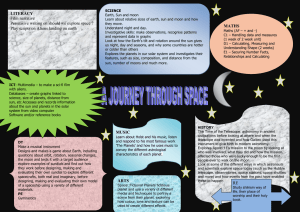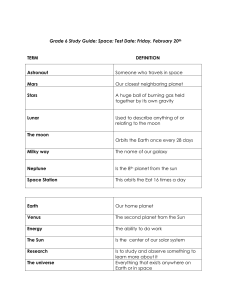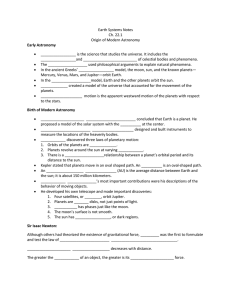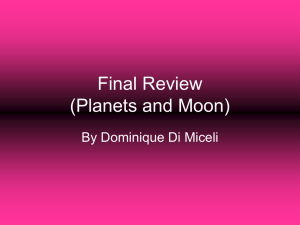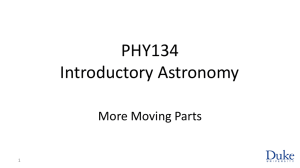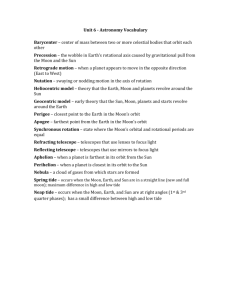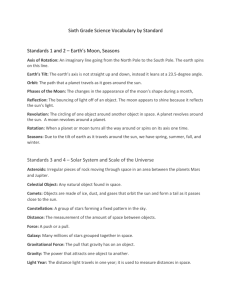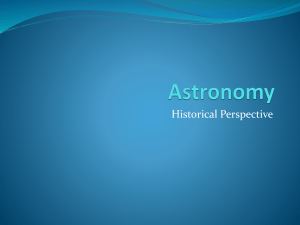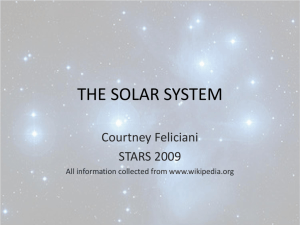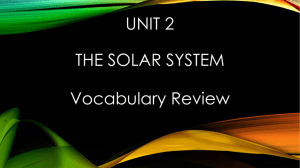Ch 27 & 28 Astronomy Jeopardy
advertisement
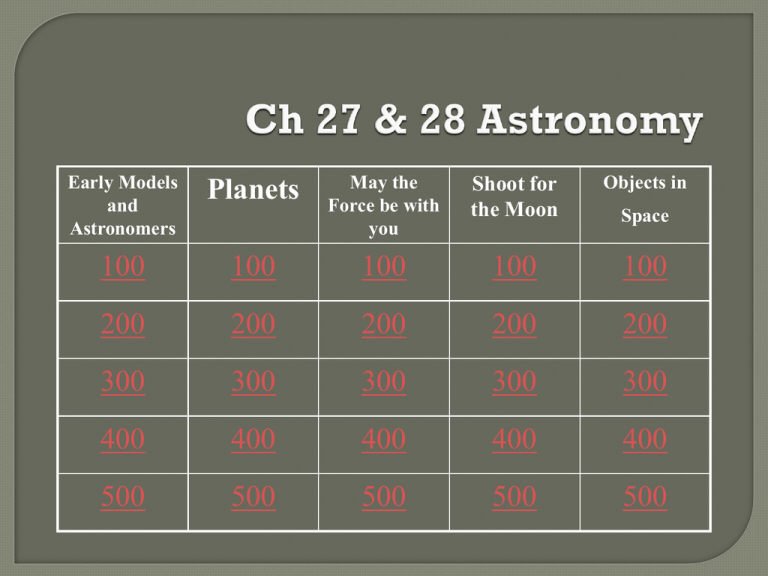
Early Models and Astronomers Planets May the Force be with you Shoot for the Moon Objects in 100 100 100 100 100 200 200 200 200 200 300 300 300 300 300 400 400 400 400 400 500 500 500 500 500 Space Model where planets revolve around the Earth Answer Geocentric Home The moon’s crust is mainly made of these two features: Answer Anorthrosites and Maria Home Who proposed the Heliocentric model? Answer Copernicus Home The law that describes the path of a planet that orbits the sun is called ________ Answer Law of Ellipses Home What astronomer said planets moved in epicycles, which are little circles as they went around Earth? Answer Ptolemy Home What is the least dense planet that also has bands and rings made of dust and ice? Answer Saturn Home What is the largest planet in the solar system? Answer Jupiter Home Planet who’s axis is almost parallel to its plane of orbit Answer Uranus Home What planet gets its color from large amounts of methane? Answer Uranus Home What 2 inner planets are most alike in their size and mass? Answer Venus and Earth . Home Degree of elongation of an elliptical orbit Answer Eccentricity Home The time required for a body to complete a single orbit Answer Orbital Period Home Force that PULLS on a body in space Answer Gravity Home What is a bright streak of light that results from a meteoroid burning up in our atomosphere? Answer Meteor Home Pattern in which is appears as though the planets are moving backward relative to the stars Answer Retrograde Motion Home The force of gravity between Earth and moon cause _____ in bodies of water Answer Tides Home Dark areas on the moons surface Answer Mare Home When the lighted part of the moon appears to increase, the moon is said to be __________. Answer Waxing Home This occurs when the shadow of one celestial body falls on another celestial body Answer Eclipse Home What do we call the fine, smooth dust on the moon? Answer regolith Home Fragments of rock that orbit the sun Answer Asteroid Home Small bodies of ice, rock and dust that follows highly elliptical orbits around the sun Answer Comets Home Any part of a meteoroid that didn’t burn up when entering the Earth’s atmosphere and reached Earth’s surface Answer Meteorite Home Region that starts beyond Neptunes orbit which contains dwarf planets and other small bodies of ice Answer Kuiper Belt Home Large cloud of dust and ice believed to hold nuclei of billions of comets and possible origin of our comets Answer Oort Cloud Home
